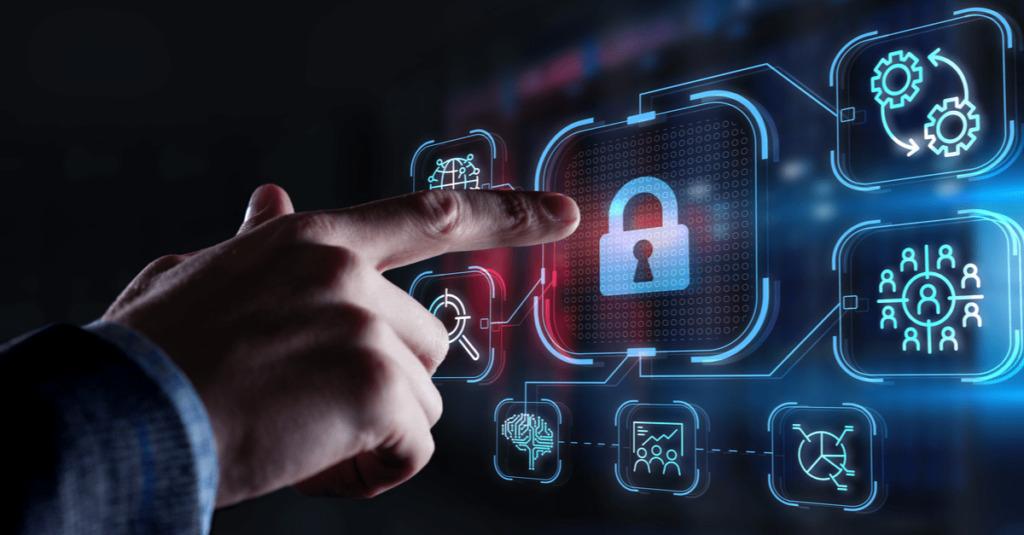Demystifying Identity Governance: A Guide for Organizations

Managing digital identities requires meticulous planning to ensure data security and seamless access for authorized users. Yet, it’s a discipline often misunderstood by many in the business community, leading to confusion and potentially costly mistakes. Identity governance provides a structured framework for establishing policies and procedures. It also aids in ensuring compliance with regulations like GDPR and helps companies improve operational efficiency.
Defining Roles and Privileges
A key component of identity governance is role management. This is the process of grouping access privileges into predefined roles, typically based on job title or function, used to grant or revoke access for people within an organization. A role-based approach helps reduce risk and improve efficiencies by allowing organizations to conduct business-friendly,
accurate access reviews and certifications faster. Roles are also an excellent tool for helping to ensure that people have only the access they need. Increasingly, employees must have access to organizational resources across multiple devices and locations. This can pose significant security risks. In addition, compliance laws and regulations such as HIPAA, SOX, and GDPR are increasingly forcing businesses to institute strict access controls.

Privileged access management (PAM) is an integral part of identity governance because it helps manage the access rights of people with administrative capabilities such as creating, managing, and deleting user accounts. Historically, many vendors have treated PAM as a separate capability from IGA. Still, we believe it is essential to any comprehensive identity governance solution because misusing these rights can profoundly impact a company’s security.
Another critical component of IGA is entitlement management, which organizes permissions by their functional use rather than just by a person’s identity data.
Authentication
Authentication is the process that ensures identity users are who they say they are. Typically, this involves logging in with a user ID and password but can include a biometric identifier like a retina scan. Identity governance solutions leverage authentication to help identify and limit access privileges to those who should have them and eliminate unapproved or unauthorized changes. Managing identity and access privileges across an organization is complex because of the ever-changing number of applications and technologies deployed.
A comprehensive IGA solution helps mitigate risks and improve compliance by automating manual processes and giving administrators a bird’s eye view of all platforms to more easily spot suspicious activity that could indicate a breach. IGA tools enable IT teams to streamline and automate workflows that provision access requests by role, carry out bulk approvals, and simplify the review and certification of those roles. This reduces time management and cost concerns for IT, freeing up resources to focus on other priorities.
These processes also make adhering to least privilege principles easier and minimize the risk without impacting productivity or slowing business operations. Getting the most out of an IGA solution requires a team with various skills. This includes a deep understanding of the specific security goals that the organization is trying to achieve, including reducing risk and improving audit and compliance performance.

Access Control
As security personnel verify a subject’s identity, they must also ensure they are authorized to access a specific system, app, or network. That’s where access control comes in. In addition to providing a formal definition of privileges, it enforces strict policies that protect sensitive information from being compromised by unauthorized users. Typically, access control requires two-factor authentication.
For example, a human subject seeking access to an object might need to present credentials plus some other factor that proves their physical presence (such as a key card or PIN) or biometric reading (such as a fingerprint or iris scan). An identity management solution with strong access control capabilities can help you implement and manage these processes and keep track of them for accounting purposes. As user associations change—for instance, when someone transfers to a different department or leaves the organization—access needs to be updated accordingly.
This is where an identity governance and administration (IGA) solution becomes a critical piece of the infrastructure for your business. IGA solutions centralize identities and streamline the provisioning and de-provisioning of access to on-premises and cloud systems and application permissions. In addition, they can improve compliance by allowing centralized auditing, reporting, and remediation tools and support federated identities to simplify the process of onboarding and offboarding.
Monitoring
Whether employees are working remotely or in person, they must be able to access critical data from their preferred devices. However, this can put the business at risk of cyber-attacks and data breaches without proper governance. This is why identity governance and administration (IGA) solutions are crucial. IGA helps companies to monitor and control user access to cloud-based and on-premises systems. It ensures that only authorized users can access data and applications and detects unauthorized activity.
A comprehensive IGA solution offers capabilities like visibility, segregation of duties, role management, attestation, and analytics. It enables security administrators to efficiently manage and monitor the ever-changing landscape of IT applications and data. It also allows organizations to meet compliance and industry mandates such as SOX, HIPAA, GDPR, and ISO 27001.
This is achieved by leveraging built-in reporting and auditing features that allow for periodic access reviews and certifications. If you’re in the market for an IGA solution, examining your current processes closely is essential. Consider what problems you must solve, the skills and stakeholders involved in addressing them, and any other factors that may influence your decision. Identify current risks and future goals, and then find a product that meets your needs now while still providing the capability to scale into the future. By doing this, you’ll get the most out of your investment.



